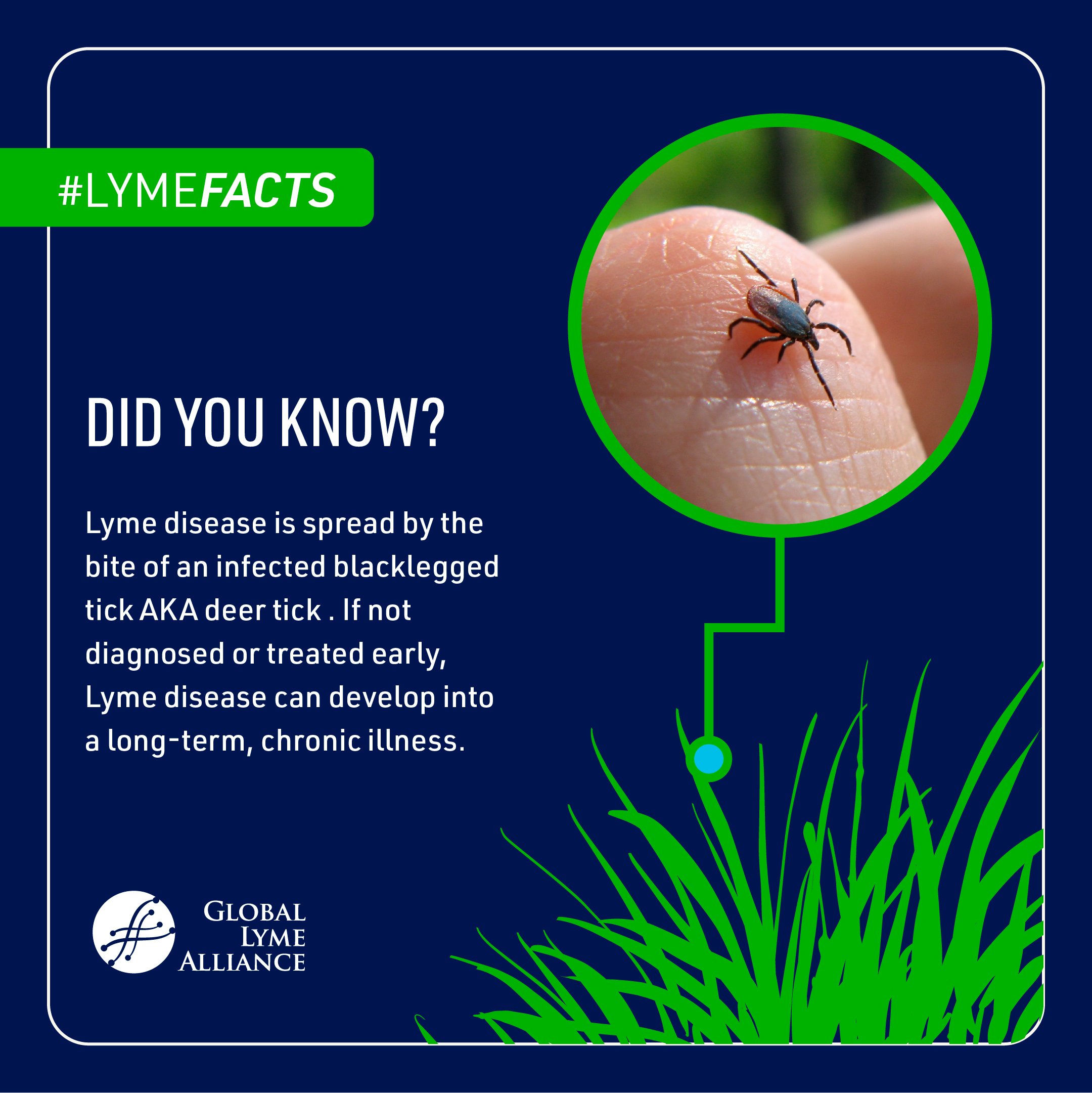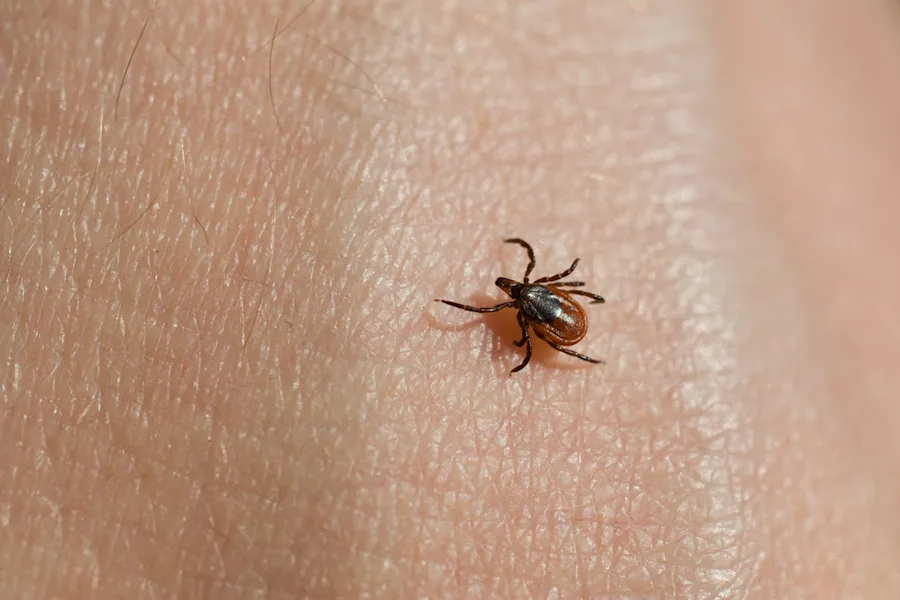Imagine this: You’ve just returned from a relaxing hike or a delightful picnic in the park. You’re feeling refreshed and rejuvenated, when suddenly, you notice a small, unwelcome guest on your skin—a tick.
Panic sets in as questions race through your mind: What should you do next? Is this dangerous? How do you remove it safely? These tiny creatures can be more than just a nuisance; they can pose health risks if not dealt with promptly and correctly.
You’ll discover simple, step-by-step actions to take when you find a tick stuck to your body. You’ll learn how to remove it safely, and understand the signs to watch for in case of any potential health concerns. By the end of this read, you’ll be armed with knowledge, turning a moment of panic into a manageable situation. Keep reading to ensure you’re prepared and protected, so you can enjoy your time outdoors with peace of mind.
Identify The Tick
Discovering a tick attached to your skin can be alarming. Remove it gently with tweezers, pulling straight out. After removal, clean the area and monitor for any signs of infection.
Noticing a tick stuck to your body can be alarming, but identifying the tick is crucial. Knowing what kind of tick has latched onto you helps determine the potential risk for disease transmission and guides your next steps. So, how do you go about identifying a tick? Let’s delve into the specifics.Types Of Ticks
Ticks come in various species, each with its own set of characteristics. Two common types you might encounter are the deer tick and the dog tick. The deer tick, often associated with Lyme disease, has a reddish-brown body and is relatively small. The dog tick, on the other hand, is larger and has a distinctive white or silver pattern on its back. Identifying the type of tick can provide insights into the health risks you might face. Which type did you find? This knowledge is your first line of defense.Recognizing Tick Features
Ticks have unique features that set them apart from other insects. They have flat bodies and can be surprisingly small, especially in their nymph stage. Look closely at the tick’s color, size, and markings. A magnifying glass can be helpful if the tick is tiny. Is the tick’s body rounded or flat? Are there any distinctive markings on its back? These details are essential for accurate identification. Identifying a tick might seem daunting at first, but with a keen eye, you can gather all the necessary information. Once you know what you’re dealing with, you can make informed decisions. Have you ever had to identify a tick before? What surprised you about the process? These questions can lead you to a deeper understanding and a better response.
Credit: www.cdc.gov
Stay Calm And Avoid Panic
Discovering a tick on your body can be unsettling. Staying calm is essential. Avoiding panic ensures you handle the situation wisely. Keeping a clear mind prevents hasty actions that could worsen the situation. This section guides you through maintaining composure and making informed decisions.
Reasons To Stay Calm
Staying calm helps you think clearly. Panic clouds judgment. Clear thinking leads to better actions. A tick bite needs careful handling. Rushing could lead to mistakes. Mistakes might increase infection risk. Calmness allows effective tick removal. It minimizes health risks. Knowing the benefits of calmness is crucial.
Avoiding Rash Decisions
Rash decisions often lead to errors. Incorrect tick removal can cause harm. Remaining calm helps you focus. Focus ensures proper technique use. A hasty pull might leave tick parts in skin. This increases infection chance. Calm actions prevent this. Take a moment to breathe. Consider your next step carefully.
Gather Necessary Tools
Gather the right tools for tick removal. Use fine-tipped tweezers or a tick removal device. Avoid squeezing the tick’s body to prevent infection.
When you discover a tick latched onto your body, your first instinct might be to panic. However, staying calm and gathering the right tools is crucial. Being prepared can make the tick removal process smoother and reduce the risk of infection. Are you ready to ensure you have everything you need? Let’s start by assembling your tick-removal kit.Tweezers And Gloves
A pair of fine-tipped tweezers is your best friend in this situation. They allow you to grasp the tick as close to the skin’s surface as possible. Avoid using fingers, as this can cause the tick to release more bacteria into your body. Wearing gloves is a smart move. It protects your hands from coming into direct contact with the tick. Plus, it adds an extra layer of hygiene while handling any potentially infected material.Antiseptic Supplies
Once the tick is removed, cleaning the area is crucial. Use an antiseptic wipe or solution to disinfect the bite area thoroughly. This step helps prevent any infection from setting in. Consider having a small first aid kit on hand that includes antiseptic supplies. It’s a simple addition to your home or travel bag that can make a big difference. Isn’t peace of mind worth a little preparation?Proper Removal Techniques
Discovering a tick on your body requires calm action. Gently grasp it with fine-tipped tweezers, pulling upward steadily. Wash the area with soap and water after removal.
When you discover a tick stuck to your body, it’s crucial to act promptly and correctly. Proper removal techniques are essential to avoid complications such as infections or diseases. Handling the situation with care ensures the tick is completely removed without causing harm.Grasping The Tick
To start, use a pair of fine-tipped tweezers. Imagine you’re performing a delicate task and precision is key. Position the tweezers as close to your skin as possible. Firmly grasp the tick’s head, not its body. This reduces the risk of squeezing infectious fluids from the tick into your skin. Ever tried removing a stubborn splinter? The same patience and steadiness apply here.Removing Without Breaking
Once you have a firm hold, pull upward with steady, even pressure. Avoid jerking or twisting the tick. Have you ever tried to open a jar and twisted too hard, breaking the lid? The same principle applies; twisting can cause the tick to break, leaving parts behind. If you’re feeling unsure, remember that slow and steady wins the race. After removal, clean the bite area with soap and water. You might be tempted to use alcohol or antiseptic, but simple cleaning works just fine. Do you know where the tick is now? Don’t just toss it away. Save it in a sealed bag for identification, should you need medical advice later. This small step could make a big difference in your health management. Have you ever wondered why ticks choose you? Understanding the removal process empowers you to take quick action and protect yourself. Proper techniques don’t just remove the tick—they help keep you safe.Cleaning The Bite Area
Gently clean the tick bite area with soap and water. This helps prevent infection and removes bacteria. Pat dry with a clean towel and avoid scratching to keep the skin healthy.
Cleaning the bite area after removing a tick is crucial. It helps prevent infection and promotes faster healing. You might be surprised at how a simple cleaning routine can make all the difference.Using Antiseptics
Once you’ve removed the tick, immediately wash the bite area with soap and warm water. This simple step can help remove any residual bacteria. After washing, apply an antiseptic to the area. Rubbing alcohol or iodine solution are effective choices. They help kill bacteria and reduce the risk of infection. Remember, it’s not just about applying the antiseptic. Ensure the area is completely dry before covering it with a bandage. This keeps bacteria at bay and aids in the healing process.Monitoring For Infection
After cleaning the bite area, keep an eye out for any signs of infection. Redness, swelling, or oozing could indicate trouble. Have you ever noticed your skin feeling warm or tender around a bug bite? These are red flags that should not be ignored. If you observe any unusual symptoms, don’t hesitate to seek medical advice. Early intervention can prevent a minor issue from becoming a major problem. Taking these steps can make a significant difference in your recovery. Have you ever dealt with a tick bite before? Your experience might just help someone else!
Credit: www.globallymealliance.org
Disposing Of The Tick
Spotting a tick attached to your skin requires prompt action. Use tweezers to gently pull it straight out. Clean the area with soap and water to prevent infection.
Removing a tick from your body can be a nerve-wracking experience. Once you’ve successfully detached the tick, the next step is disposing of it safely. Proper disposal is crucial not only for your health but also to prevent the spread of diseases. Let’s dive into the essential steps you need to take once you have the tick in your possession.Sealing In A Container
It’s not enough to simply toss the tick in the trash or flush it down the toilet. You need to ensure it’s securely contained. Grab a small, sealable container or a zip-lock bag. Place the tick inside, making sure it’s completely closed. Why is this important? Ticks can carry diseases like Lyme disease, and securing them prevents them from crawling back to you or others. The container acts as a barrier, keeping the tick from escaping until you’re ready to dispose of it properly.Reporting To Local Health Authorities
You might wonder, why bother reporting a tick? Consider this: local health authorities often track tick activity to understand disease spread patterns. Your report can contribute to public health data, helping communities stay informed about tick-borne risks. Reach out to your local health department with details of your tick encounter. Include information like the location and circumstances under which you found the tick. This not only aids in research but also prompts authorities to take preventive measures in your area. Have you ever thought about the impact of your actions on public health? Reporting ticks might seem trivial, but it plays a significant role in community awareness and safety.Monitoring Symptoms
Finding a tick on your body can be alarming. It’s important to act swiftly. Once removed, monitoring symptoms is crucial. This helps in detecting any tick-borne diseases early. Observing your body’s reactions can prevent complications.
Signs Of Tick-borne Diseases
Pay attention to symptoms after a tick bite. Watch for rash or fever. These can be early signs. Muscle pain and fatigue might occur. Joint swelling is also common. Some people experience headaches. If you notice these, stay alert.
When To Seek Medical Attention
Consult a doctor if symptoms persist. A rash spreading quickly requires attention. High fever is another warning sign. Don’t ignore severe headaches. Difficulty breathing is serious. Seek help immediately if it happens.
Quick medical action prevents serious health issues. Don’t hesitate to contact healthcare professionals. They offer the best guidance for tick-borne illnesses.

Credit: www.lyme.health.harvard.edu
Preventing Future Tick Bites
Discovering a tick on your body prompts quick action. Carefully remove it with tweezers, pulling straight out. Cleanse the bite area and your hands with soap and water.
Preventing future tick bites is essential for maintaining your health and enjoying outdoor activities without worry. Ticks are more than just a nuisance; they can carry diseases that impact your well-being. By taking a few precautionary steps, you can significantly reduce your chances of encountering these tiny but troublesome creatures.Wearing Protective Clothing
When heading outdoors, especially in wooded or grassy areas, consider your outfit as your first line of defense. Long-sleeved shirts and long pants can create a barrier between your skin and ticks. Tuck your pants into your socks for added protection—this simple trick can prevent ticks from crawling up your legs. Choose light-colored clothing to make it easier to spot ticks before they latch onto you. Have you ever noticed how ticks seem to blend into darker fabrics? Light colors can help you quickly see and remove any unwanted hitchhikers.Using Tick Repellents
Applying tick repellents is another effective way to keep these pests at bay. DEET, picaridin, and permethrin are common ingredients found in repellents that can deter ticks. Make sure to apply them to exposed skin and clothing for the best protection. Have you considered using natural alternatives? Essential oils like lemon eucalyptus or lavender can offer a more organic approach, though they may need to be applied more frequently. Always follow the instructions on the label to ensure maximum effectiveness and safety. Taking these preventive measures can make your outdoor adventures more enjoyable and less worrisome. Do you have any tips or experiences with avoiding tick bites? Share your thoughts and keep the conversation going!Frequently Asked Questions
How Do I Safely Remove A Tick From My Body?
Use tweezers. Grip tick near skin. Pull straight out. Clean area with antiseptic.
Can Ticks Cause Serious Health Issues?
Yes, ticks can transmit diseases like Lyme. Watch for symptoms like rash or fever. Seek medical help if needed.
What Should I Do After Removing A Tick?
Clean the bite area. Wash hands. Monitor for signs of infection or illness. Consult a doctor if symptoms appear.
How Can I Prevent Ticks From Attaching?
Wear long sleeves. Use insect repellent. Avoid tall grass. Check body after outdoor activities.
Are All Ticks Dangerous?
Not all ticks carry diseases. But it’s best to remove them quickly. Some can cause serious illness. Stay cautious.
Conclusion
Removing a tick promptly is crucial for health. Use tweezers to grip it close. Pull steadily without twisting. Clean the bite with soap and water. Watch for signs of illness. Seek medical advice if feeling unwell. Prevention is key. Wear protective clothing outdoors.
Use insect repellent for extra protection. Check your body after spending time in nature. Ticks can be tiny, so inspect carefully. Knowing what to do keeps you safe. Stay informed to protect yourself and loved ones. Health matters, act wisely.




